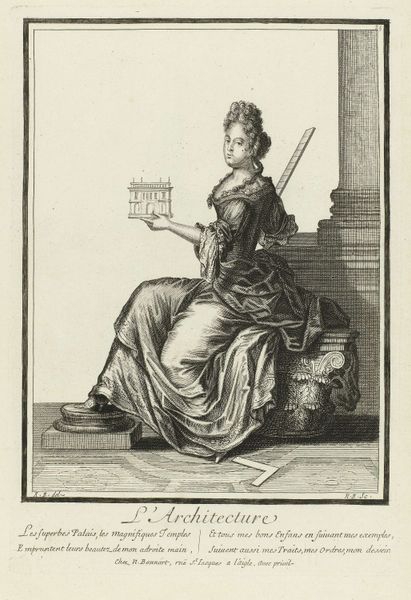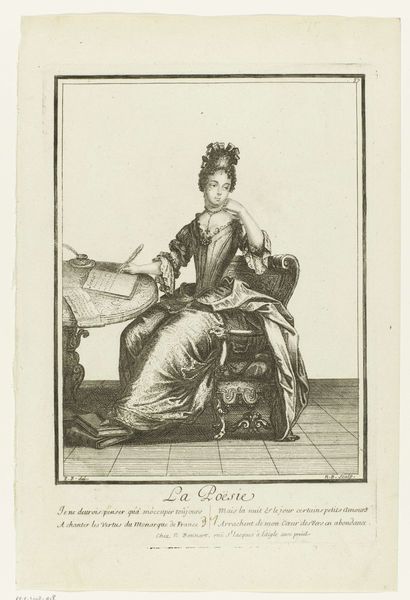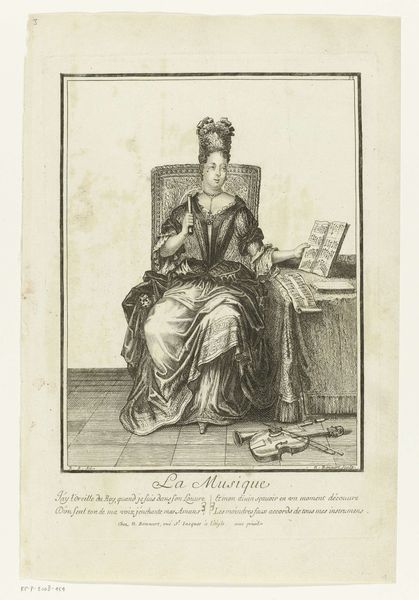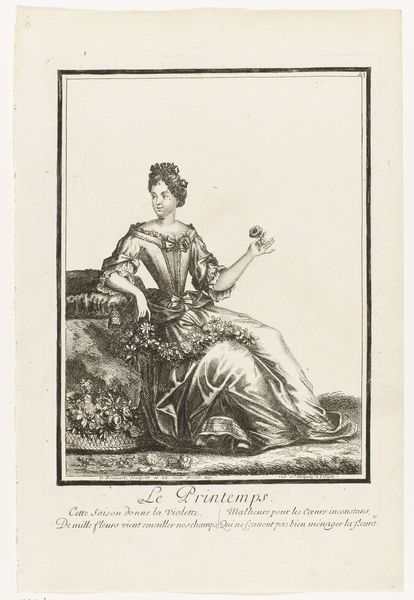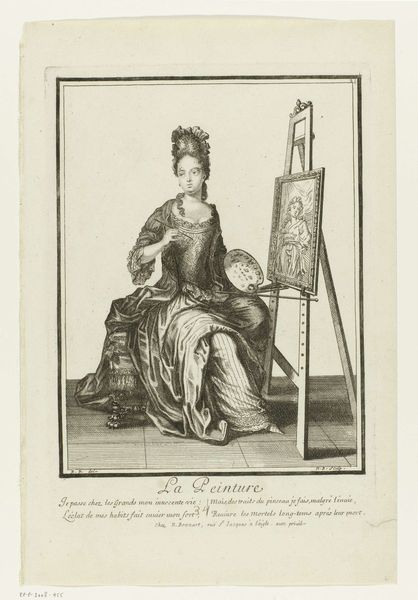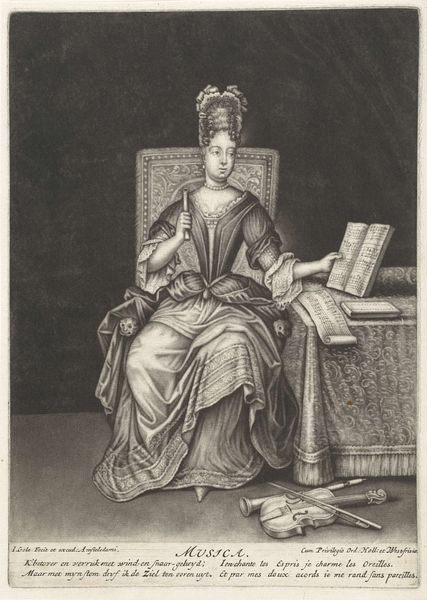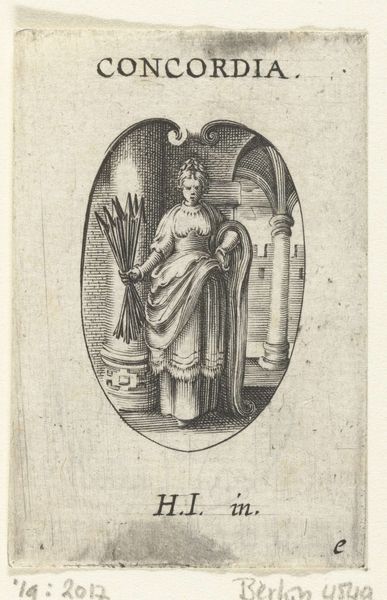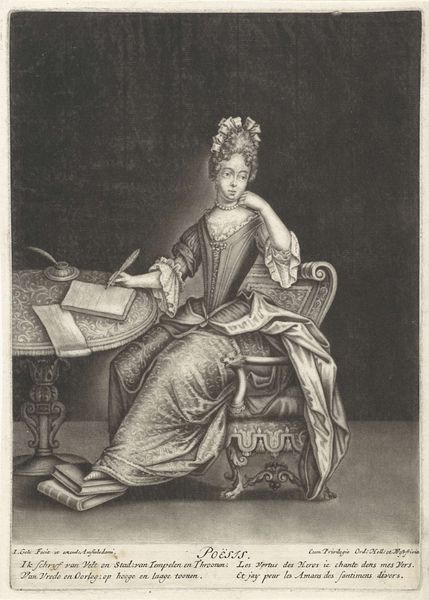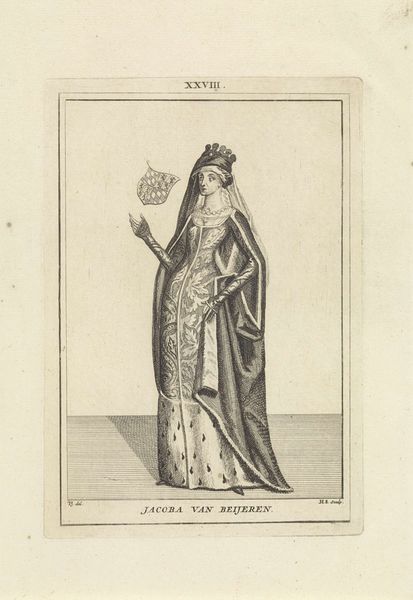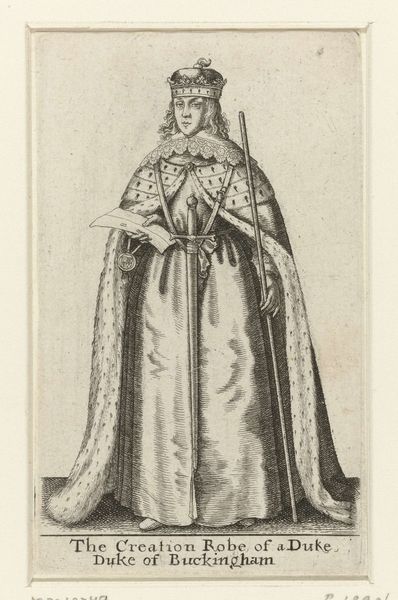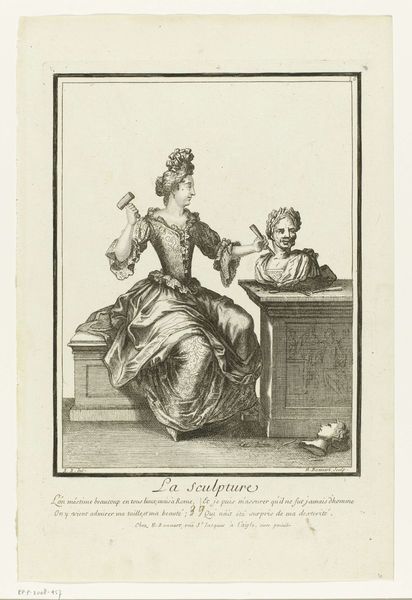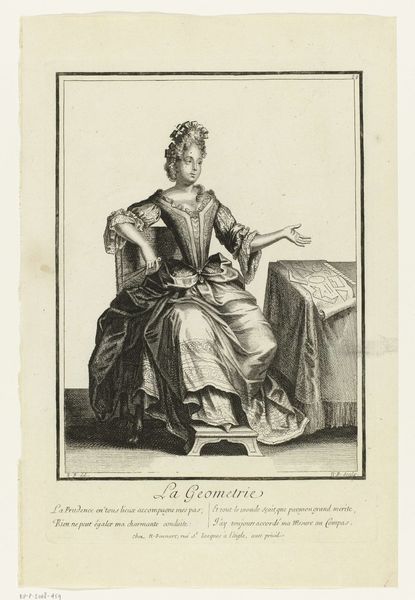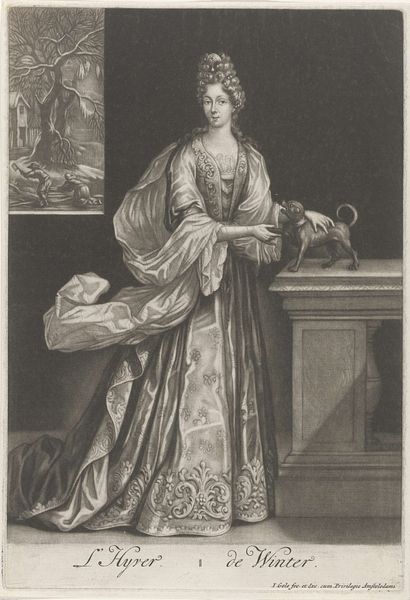
print, engraving
#
portrait
#
allegory
#
baroque
# print
#
old engraving style
#
traditional media
#
caricature
#
history-painting
#
engraving
Dimensions: height 268 mm, width 185 mm
Copyright: Rijks Museum: Open Domain
Curator: Nicolas Bonnart created this engraving, titled “Astrologie,” sometime between 1647 and 1718. Editor: My first impression is one of controlled elegance. The sharp lines of the engraving create a world of refined textures. I’m immediately drawn to the central figure—the volume of her dress is fascinating in relation to the rigid geometry of the table and instruments around her. Curator: Right, Bonnart’s work really captures the spirit of the period. This piece wasn't just art; it served as a commentary on the social fascination with science and the emerging role of women in intellectual pursuits. The image was likely circulated as part of a larger set of prints, accessible to a wide audience hungry for knowledge and novelty. Editor: Precisely. And the way he uses the black and white contrast enhances this mood of structured inquiry, but also plays into the symbolism. She literally holds the world in one hand. There's a very balanced quality to the distribution of tonal values. It keeps our eyes circulating throughout the composition. Curator: I'd argue that this balance reinforces the ideal of rationality that was gaining prominence during that time. Yet the text at the bottom hints at a certain skepticism—perhaps suggesting that astrology caters to the curiosities of the masses, offering pleasure through the movements of the stars. Editor: Yes, there's an inherent tension there between science and spectacle, control and wonder. Even the single source of light appears symbolic: emphasizing her face, her source of wisdom or vision if you will. And she looks like she's posing with that strange telescope that points, strangely, behind her head. Curator: These prints were part of a visual culture shaping the perception of fields like astronomy and astrology, turning them into commodities for public consumption. The art market helped spread these ideals across different segments of society. Editor: Agreed. But by considering Bonnart's delicate and intricate linear work, we can look beyond historical context and understand how form itself reinforces a larger set of cultural ideas, about perception and knowledge. It allows us to appreciate both his skill and what he might have been commenting on. Curator: A fascinating look at the interplay of art and society, then, through a new lens. Editor: Indeed, quite illuminating.
Comments
No comments
Be the first to comment and join the conversation on the ultimate creative platform.
